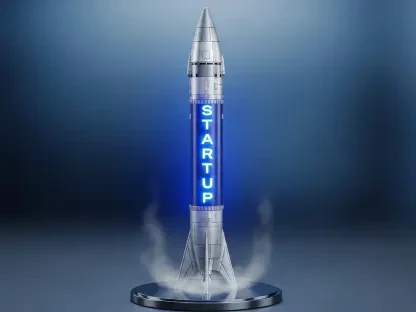Setting the Stage: A $100 Billion Industry Ripe for Disruption
In the sprawling landscape of industrial sectors, waste management stands as a titan, generating over $100 billion in revenue annually in the U.S. alone, yet beneath this economic might lies a startling reality of outdated practices. An industry mired in old-fashioned sales and customer management methods, where pen-and-paper approaches and door-to-door prospecting still dominate, is ready for change. This analysis dives into how technology, particularly through the lens of a pioneering startup, is poised to reshape the market dynamics of waste haulers, dumpster rental services, and industrial recyclers. By examining current trends, data-driven insights, and future projections, this exploration highlights the transformative potential of AI-driven tools in addressing long-standing inefficiencies. The focus is on a specialized CRM platform that could redefine competitive edges for businesses ranging from small operators to industry giants.
Market Dynamics: Unveiling Trends and Challenges in Waste Management
Historical Lag: A Sector Slow to Embrace Digital Tools
The waste management industry, despite its critical societal role, has historically trailed other sectors in adopting technology for sales and customer relationship management. Many companies, from single-truck haulers to behemoths valued at billions, continue to rely on manual processes that date back decades. Generic CRM platforms, while powerful in other contexts, often fall short due to their complexity and lack of tailored features for this unique market. This technological gap creates inefficiencies, with businesses spending excessive time on lead generation and client tracking instead of focusing on operational growth. Understanding this backdrop is essential, as it reveals a market hungry for innovation yet resistant to abrupt change, setting the stage for specialized solutions to make a profound impact.
Revenue Disparities: A Diverse Landscape of Players
Spanning a spectrum from small operators with limited resources to enterprise-level firms with vast networks, the waste management sector exhibits significant disparities in scale and capability. Mid-to-large regional players, especially those in niches like medical and hazardous waste, face distinct challenges in client acquisition due to stringent regulations and specialized needs. Current market data indicates that while the top players command substantial shares, smaller entities struggle to compete without access to advanced tools. This diversity underscores a critical trend: the need for scalable technology that can cater to varied business sizes without overwhelming users with unnecessary features. The opportunity lies in bridging this divide, offering solutions that democratize access to efficiency-enhancing systems.
Regional Nuances: Local Factors Shaping Tech Adoption
Beyond size disparities, regional differences play a pivotal role in shaping the waste management market’s tech landscape. Urban operators contend with fierce competition and complex regulatory environments, often necessitating robust data insights to stay ahead. In contrast, rural haulers prioritize cost-effective tools that align with lean budgets and sparse client bases. These variations highlight a broader trend of localized demand, where one-size-fits-all approaches frequently fail to resonate. Market analysis suggests that platforms addressing these geographic and market-specific challenges could gain significant traction, especially as economic pressures and environmental standards continue to evolve. This dynamic presents both a hurdle and an opening for innovative entrants to carve out substantial market share.
Future Projections: AI as the Catalyst for Market Evolution
Leveraging Intelligence: AI’s Role in Sales Prospecting
A seismic shift is underway in waste management, driven by artificial intelligence’s ability to transform sales processes. Specialized platforms now harness AI to uncover hidden opportunities, such as identifying small businesses with minimal online footprints or unadvertised construction projects ripe for service contracts. By processing vast amounts of public data into actionable leads, these tools offer precision that traditional methods cannot match. Projections indicate that AI adoption could reduce prospecting time by up to 40% for mid-tier firms over the next few years, fundamentally altering competitive dynamics. However, challenges remain, including ensuring data accuracy and overcoming skepticism from industry veterans accustomed to personal networks.
Funding and Growth: Investment Trends Fueling Innovation
Investment in waste management technology is gaining momentum, with recent seed funding rounds signaling strong investor confidence in AI-driven solutions. Capital inflows, such as a notable $5 million injection into a leading startup, are earmarked for expanding sales teams and enhancing platform capabilities with features like mapping and route optimization. Market forecasts suggest that software investment in this sector, currently minimal with fewer than a dozen active providers, could triple by 2027 as operational costs rise and digital tools become indispensable. This trend points to a burgeoning market for tech providers, particularly those offering industry-specific solutions that align with existing workflows rather than disrupting them.
Market Penetration Goals: Ambitious Targets and Expansion
Looking ahead, projections for tech adoption in waste management are ambitious, with leading innovators aiming to capture a significant portion—potentially up to 30%—of the market within the next few years. Beyond core services, there is potential for expansion into adjacent industrial sectors, leveraging the same AI frameworks to address parallel inefficiencies. Economic indicators, including tightening environmental regulations, are expected to accelerate demand for streamlined operations, positioning tech-forward companies as key players. The challenge lies in balancing rapid growth with the industry’s cautious approach to change, ensuring that innovations complement rather than replace established practices. This trajectory suggests a market on the cusp of a digital renaissance.
Reflecting on Insights: Strategic Pathways Forward
Looking back, the analysis of the waste management market reveals a sector at a critical juncture, where long-standing inefficiencies collide with the promise of AI-driven transformation. The examination of trends, from historical tech resistance to regional disparities, paints a picture of an industry desperate for tailored solutions. Projections underscore the potential for significant market shifts, driven by intelligent prospecting tools and strategic investments that fuel growth. For industry stakeholders, the path forward involves adopting scalable platforms that enhance sales efficiency while respecting traditional methods. Businesses are encouraged to invest in training to integrate digital tools seamlessly, starting with core features before expanding to advanced functionalities. Ultimately, the journey highlights a clear imperative: embracing specialized technology offers a competitive edge in a market poised for sweeping change.









